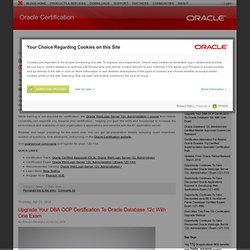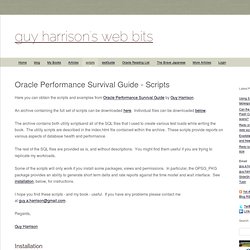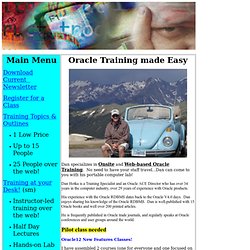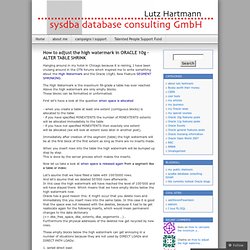

Certification. The beta period is closed for Oracle WebLogic Server 12c: Administration I (Exam 1Z1-133), and registration is now open for the production version of the exam.

Passing this exam leads to the Oracle Certified Associate (OCA), Oracle WebLogic Server 12c Administrator certification. Oracle WebLogic Server sets the industry standard for Java application servers, and the "Oracle Certified Associate (OCA) - Oracle WebLogic Server 12c Administrator" certification sets the standard for WLS administrators.
Obtaining this certification proves that you have the skills to set up server environments, tune performance and troubleshoot with confidence and raises the bar for your peers. Register and begin preparing for the exam now. You can get all preparation details, including exam objectives, number of questions, time allotments, and pricing on the Oracle Certification website. How to install or uninstall (remove) Context on Oracle 9i/10g? (DBA Tools) Tanel Poder's blog: Core IT for Geeks and Pros. Guy Harrison - Oracle Performance Survival Guide - scripts. Here you can obtain the scripts and examples from Oracle Performance Survival Guide by Guy Harrison.

An archive containing the full set of scripts can be downloaded here. Individual files can be downloaded below. The archive contains both utility scriptsand all of the SQL files that I used to create various test loads while writing the book. The utility scripts are described in the index.html file contained within the archive. These scripts provide reports on various aspects of database health and performance. The rest of the SQL files are provided as is, and without descriptions. Some of the scripts will only work if you install some packages, views and permissions. I hope you find these scripts - and my book - useful. Regards, Guy Harrison Installation Many scripts can be run without any installation providing that the user has access to V$ views. 1. Here is an example session: Extending the SH schema Listing of individual utility scripts. Dan Hotka. Oracle Training made Easy Dan specializes in Onsite and Web-based Oracle Training.

No need to have your staff travel...Dan can come to you with his portable computer lab! Dan Hotka is a Training Specialist and an Oracle ACE Director who has over 34 years in the computer industry, over 29 years of experience with Oracle products. His experience with the Oracle RDBMS dates back to the Oracle V4.0 days. Ixora Performance Tips. Classes of Oracle Wait Events. Every oracle wait event belongs to a class of wait event.

Here is the list of classes of oracle wait events. 1)Administrative: DBA commands cause users to wait. Example: index rebuild 2)Application: User application codes cause to wait. Example: row level lock 3)Cluster: Waits related to Real Application Cluster resources. 4)Commit: After issuing commit wait for redo log write confirmation. 6)Configuration: Waits caused by inadequate configuration of database or instance resources Example: Undersized log file size, undersized shared pool size. 7)Idle: Waits that signify the session is inactive, that is session waiting for work. 8)Network: Waits related to network messaging. 9)Other: Waits which should not typically occur on a system. Kamran Agayev’s Oracle Blog. DBA Kevlar. How to adjust the high watermark in ORACLE 10g – ALTER TABLE SHRINK « lutz hartmann as sysdba. Hanging around in my hotel in Chicago because it is raining, I have been cruising around in the OTN forums which inspired me to write something about the High Watermark and the Oracle 10gR1 New Feature SEGMENT SHRINKING.

The High Watermark is the maximum fill-grade a table has ever reached. Above the high watermark are only empty blocks. These blocks can be formatted or unformatted. First let’s have a look at the question when space is allocated - when you create a table at least one extent (contiguous blocks) is allocated to the table - if you have specified MINEXTENTS the number of MINEXTENTS extents will be allocated immedaitely to the table - if you have not specified MINEXTENTS then exactely one extent will be allocated (we will look at extent sizes later in another post).
Immediately after creation of the segment (table) the high watermark will be at the first block of the first extent as long as there are no inserts made. Let’s asume that we have filled a table with 100’0000 rows.